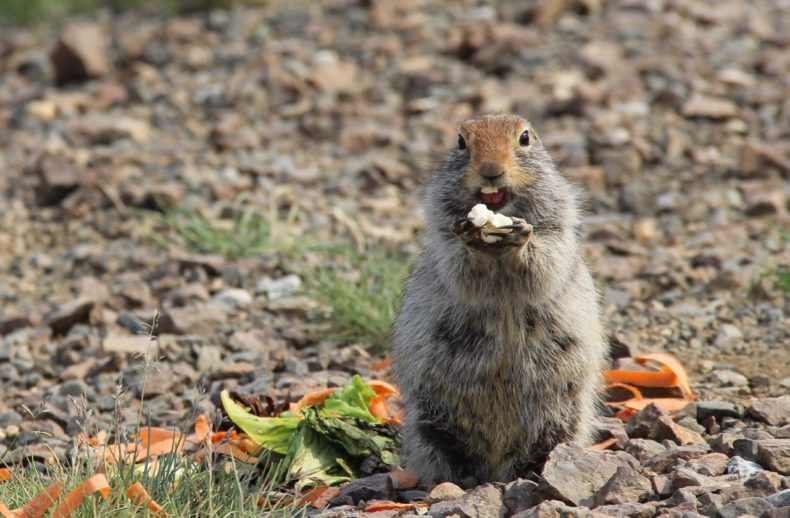
On the roadside the ground squirrel snacked
The remains of a lunch, he attacked
Now he’s developed a taste
For anthropogenic food waste
Beware, lest you be rodent carjacked.

On the roadside the ground squirrel snacked
The remains of a lunch, he attacked
Now he’s developed a taste
For anthropogenic food waste
Beware, lest you be rodent carjacked.
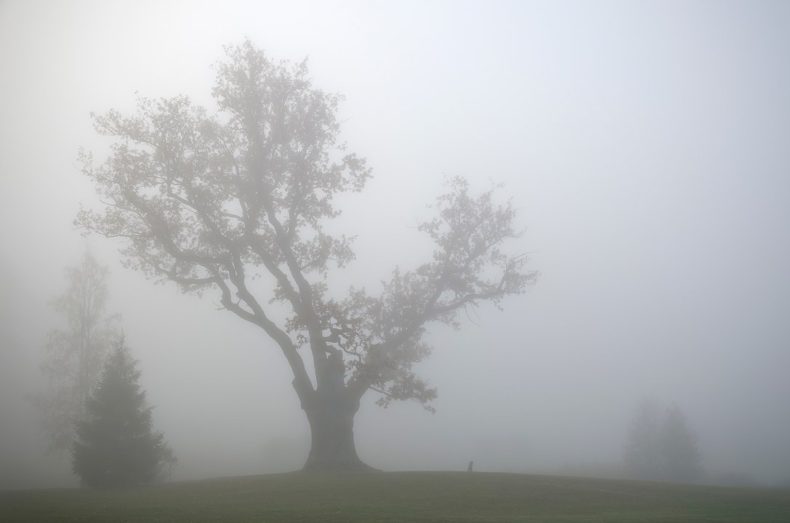
I have some unfinished business with an article I wrote. It was about grief, and it got a lot of questions and comments and though I’ve answered some already, I need to answer one more. The answer turns out to need a science metaphor. Science, which goes about its orderly business of sorting out the universe’s every detail, occasionally uses a phrase that turns out to be a metaphor useful for sorting out our own disorderly lives. I have a small, harmless obsession with science’s metaphors.
The question/comment comes from people who are grieving but aren’t sure they’re allowed to. Psychology calls this “disenfranchised grief.” My father died, these people say. Then they remember that my son died and they say, what I feel doesn’t even compare, does it, isn’t it so much worse for you? Or they say an old aunt died but she was very old; or a neighbor’s husband died but we weren’t that close; or a colleague from work died or a dog or cat died; or they’ve divorced or a child won’t speak to them; or a friend they’ve had for years died but he was just a friend. Except now they feel so sad, their lives are darkened, they keep thinking about this loss but they’re not sure whether they can even tell anyone about it, does it even count as grief? Psychology does have answers which involve checklists of symptoms and their severity from 1 to 5, etc., and the upshot is what you already know: yes, some losses are harder to carry than others and yes, what you’re feeling is grief. But chemistry has an answer too, and I like this one better.
Continue readingOk so we missed this by a month, we’re sorry but what is time anyway. Maybe in this flat hot relentless July, we could use a little June Gloom! (Or as reader Michael McKee has heard it called in the Pacific Northwest, Juneuary.) The gloom can be pretty glorious, making the beginning of summer one of hot chocolates and fuzzy blankets. This post originally appeared in 2012—and like June Gloom, it just keeps coming back every year.
**
I used to think the weather was something adults talked about because they were boring. And now that’s me, commiserating with neighbors about the state of our sky, which gave us a glorious, bluebird May and then rolled out a thick cloud carpet on the first day of June.
June Gloom isn’t just a Southern California phenomenon, and it doesn’t only happen in June. But perhaps we give it a name (and May Gray, and, in dire situations, No-sky July and Fogust) because we complain about it the most. The response from an Oregonian friend who visited this week: “Talk to the hand.”
(When I later looked at the Wikipedia entry for June Gloom, the authors concurred: “A similar phenomenon can occur in the Pacific Northwest between May and early July, though the phrase “June Gloom” is not nearly as commonly heard as it is in California due to the frequency of cloudy or overcast weather throughout the year in the Pacific Northwest.”)
Sam Iacobellis at Scripps Institution of Oceanography talked me through how SoCal’s gloom works. Different parts of the coast offer their own complications, but generally speaking, the cold Pacific water—aided and abetted by the California Current and the upwelling—and a high pressure region, the Pacific High, conspire to form the marine layer clouds that some of us call gloom.
Usually, the atmosphere gets colder as you head up. But the cold water creates a situation where the air near the water’s surface is colder than the air above it: an inversion. The Pacific High pushes air downward, compressing it and warming it. Together, this forms a stable inversion air that can hold a layer of cloud near the water’s surface like an older brother crouching on an upstart sibling.
Gloom often dissipates in the afternoon, as sunshine warms air near the surface. The warmer air mixes into the clouds and starts to break them up.
Of course, there’s a lot more than that going on, too. The gloom is the home of a wild kind of cloud field called actinoform clouds, which, to a satellite’s eye, look like enormous leaves or pinwheels. And the ocean itself might be providing more than just cold water. Iodide released by kelp may turn into cloud condensation nuclei, which could make clouds thicker and more pervasive.
All this fascinating stuff doesn’t prevent me from being boring. But I also think I was a bit too harsh on weather as a conversational topic. Yes, it is something to talk about when there’s nothing left to say. Yet it’s also a shared experience that has the potential to affect everyone.
When someone I don’t know very well says, “this weather is making me crazy,” I feel like I really do understand, more than if she talked about how her kids or parents or work was setting her teeth on edge.
Weather connects me to other times, too. I can imagine the Chumash, who lived on this coast long before the rest of us showed up, standing on the bluffs when the clouds start to break up. Those first rays of sunshine feel so needed that it almost feels like my skin is consuming them; I wonder if one of them felt this way, too.
Even when the gloom doesn’t lift all day, there are ways to enjoy it. There’s a contest that’s been going on for the last ten years or so among a few Scripps employees to guess the number of gloomy days in May and June.
I asked if there was any trick to forecasting gloom. Events that affect sea surface temperature, from the El Niño/La Niña cycles to the Pacific Decadal Oscillation may play a role in the amount of gloom. Iacobellis says the contest is really a crapshoot, but it also has a way of making the gloom seem less gloomy. Each cloud-covered day is one step closer to victory.
Each gloomy day, too, is a chance to think about what’s happening out there: cold water, enormous swirls of clouds, that lunk of an inversion layer pinning the gray above our heads. Watch out, neighbors, here I come. And now I have even more to talk about.
Today’s playlist: Crowded House, Weather With You; Len, Steal My Sunshine; The Like, June Gloom
***
Images Top: Eric Gangnath Middle: marya Bottom: Steve Lyon
I used to snicker at people who religiously read their daily horoscopes. Astrology is not science. Not even close. “No one has shown that astrology can be used to predict the future or describe what people are like based on their birth dates,” some exasperated person at NASA wrote in a Tumblr post debunking a rumor that NASA had changed the zodiac signs.
I share that NASA communicator’s irritation. (If NASA hasn’t convinced you, the University of California Museum of Paleontology has created a handy checklist to help you determine whether astrology is scientific. Spoiler: it’s not.) Yet I’ve also come to understand why people got hooked. One day last year while wrestling with my book writing, I accidentally read the horoscopes in my local paper and realized that they were actually just snippets of useful writing advice dressed up as astrological wisdom.
And that’s how I began reading Holiday Mathis’s syndicated horoscopes with an eye toward finding answers to my creative conundrums. Here are a few of the insights that I found.
Crucial advice when you’re struggling to begin a creative project — if you wait until you have it all figured out, you’ll never start.
This one reads like a card from Brian Eno and Peter Schmidt’s Oblique Strategies. You’re stuck… try this.
Here’s a siren to heed the call of that passion project I’ve been putting off.
Totally solid advice for a woman (or anyone else) writing on the internet these days.
This one reads like a description of some of my most productive reporting trips.
Do you see what I’m doing? I’m taking advice and insights from Holiday Mathis and projecting them onto my own life. This is what makes astrology so enticing.
Look, I know that astrology is nonsense and there’s nothing particular to me here. But I gotta admire Holiday’s talent. I’m an avid collector of creative prompts like Lynda Barry’s incredible books, Austin Kleon’s blog, Susan G. Wooldridge’s Poemcrazy and Ann Lamott’s classic, Bird by Bird. But what makes the personalized daily messages from Miz Mathis so alluring is that she writes them as though she’s speaking directly to me.
I wanted to know who this creative fortune teller was, so I sent her an email and asked if I could call. She passed on the phone call, but sent me a 2,000 word response to my questions. She started writing horoscopes in 1991 after answering an ad on a college bulletin board. “I don’t even know what made me think I could write horoscopes except that I had read a trillion of them in Cosmo and Seventeen mags,” she says. Next thing she knew, she was working “through the mail, sending in floppy disks and getting a checks in return from a ‘Linda Twitchel.’” She didn’t ask questions.
Eventually she met Joyce Jillson (“Linda Twitchel” was a pseudonym) — an actress, socialite, best-selling author and syndicated astrologer. Jillson had discovered that “writing horoscopes en masse is no easy gig” so she hired Mathis and several other writers to help. Eventually it was just Mathis writing all the horoscopes, and when Jillson died in 2004, she took over the column.
“The column averages 7,500 words a week. It’s about 900 words for each day of the week,” Mathis says, “and then another 1,200 for the week ahead.” She estimates that she’s written about “5,070,000 words published as Holiday Mathis and at least 3,000,000 ghost written for Joyce Jillson.” It adds up to a little more than 8 million words. No wonder she’s amassed so much writing advice.
She’s also pretty good at existential angst. “I have published over 8 million words, and what do I have to show for it? No best seller or movie version of the work. No Wikipedia page. I make a modest living and I have never gone on an extended vacation,” she says. She has a weekly deadline, and she’s come to see her work as “a spiritual practice. I am like those monks who create sand mandalas to be briefly enjoyed by the passersby and tossed to the river at the end of the day.”
“The fact that nobody is going to care about it tomorrow, or even an hour from now, that’s liberating,” she says. I asked if there was a formula, and she says no. “It’s more of an intention. I want to create a tiny poem for each sign.”
She doesn’t know how she filters all her random sources of inspiration into the words of a horoscope, but says, “the muses favor me. I believe the muses favor me for the same reason that Joyce Jillson did: I’m desperate. I’m game. I show up.” She notes that “turning in this column is how I buy food, and I like to eat. That helps. I don’t ever have writer’s block – I don’t even believe in it – because I can’t afford to.”
What I most wanted to ask her was whether she really believes in astrology. “The astrology is a given. I read the ephemeris and offer an interpretation,” she says. “The symbols are playful invitations to do my best… they are chiefs in my pantheon of muses.” She views them as characters — “Big Daddy Jupiter and the Venus the strumpet, or maybe she’s in her maternal mode, wearing a gown by Virgo or a pantsuit by Capricorn.”
She went on:
I’m sure a versed science writer such as yourself is well-aware that humans are notoriously uncomfortable with randomness. Our brains have evolved to filter out most of it, so all that gets through are the threats, the changes, and a small amount of “other” which we are compelled to make order out of… look for a pattern, come up with a theory, construct a narrative, dig into a belief about…
I am just like everyone else, bringing all I know into looking for the pattern. The pattern I’m looking for in the context of the horoscope column is one that will help people settle in to a positive feeling about the day. One that will make people feel seen and understood. Make them feel like they belong in this cluster of humanity under one sky.
I read this answer to mean that Mathis doesn’t truly believe in astrology, but when I showed her reply to a friend, she had the opposite reaction — “oh yeah, she totally believes in it.”
Which gets me to my ultimate conclusion about Holiday Mathis and about horoscopes more broadly — they aim to give us what we’re seeking. Some days my sign’s horoscope isn’t speaking to me, and so I read through the list to find one that does. I don’t actually care which sign I take from. I know that this is just generic advice that can mean whatever I want it to. I think of these daily horoscopes much like Holiday does — as “A candy snack to set the day on a sweet note. A personal nudge toward levity or introspection or fun or kindness or wisdom.”
This post first ran on May 11, 2018, but I have since interviewed Holiday Mathis and discovered that she is even more delightful than I could have ever imagined. You can listen to my interview with her on this episode of Emerging Form, my podcast about creativity. Episode link: https://emergingform.substack.com/p/episode-28-the-daily-grind-with-holiday
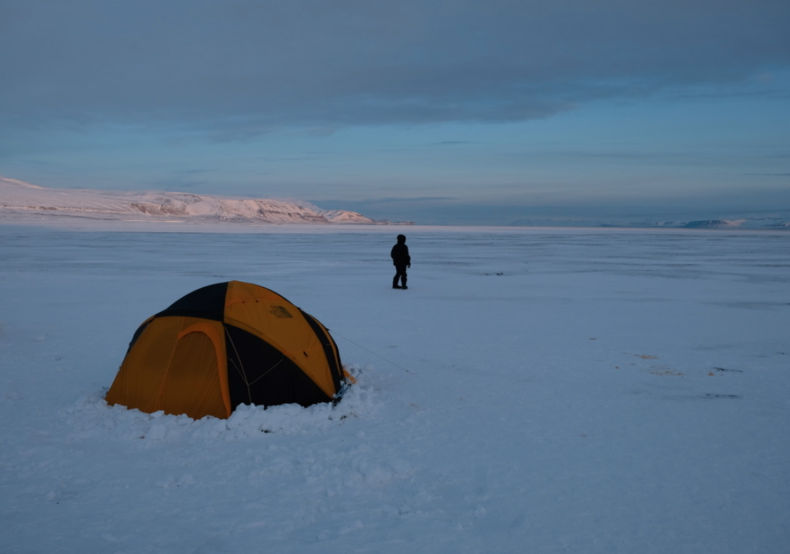
I was already half awake when I heard Audrey’s voice at the door of the tent. “Hi ladies,” she said quietly, trying not to wake the others sleeping nearby. “It’s your turn.” My tentmate Jess stirred; it seemed like she had managed to actually get some rest, but I just couldn’t stay asleep with a balaclava over my face. We wordlessly pulled on the thick down pants, jacket, and boots we’d been issued a couple days earlier by our trip organizers, and stumbled out of the relative warmth of our tent.
Outside, the sun continued its endless loop around the sky, painting the mountains blush and bruise purple. It was early April in Svalbard, an archipelago about halfway between Norway and the North Pole, and we’d just crossed the line into nightless days. Audrey, a physiologist, had come to study an expedition of women skiing to the North Pole; Jess was a physician helping her collect data, and I was writing about it for WIRED. While the expeditioners made their way north, Audrey suggested we go on our own (albeit much less rugged) adventure. She booked a trip through a French tour company, who handled all the logistics for five days of snowshoeing and dog sledding. This was only day 2 of the trip, but about a third of the group had already bailed back to hotels in Longyearbyen. They were wealthy French women who were visibly panicked when the snowcat that brought us to the wilderness began to pull away, and complained loudly about the tents’ lack of heat, lights, and running water. They forced our guide to call them another snowcat, which cost them at least a thousand dollars. Initially, I’d scoffed at their pricey decision: why book a trip to the Arctic if you weren’t prepared to be cold?
Continue reading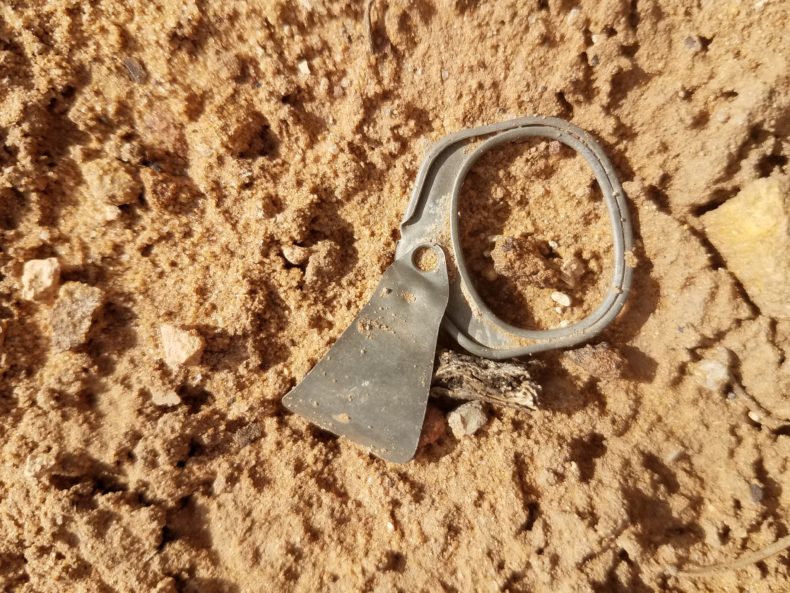 The other day I was going through someone’s collapsed house on the tip of a mesa in western Colorado. It looked like a small homestead where no one had been in a handful of decades. The front wall with its peaked roof and door still latched shut lay flat where it had fallen. I poked through nails and peeled off wallpaper, lifted a toppled wood-frame with the tip of my boot. Handle of a ceramic mug. Pull tab from a can. Shirt button.
The other day I was going through someone’s collapsed house on the tip of a mesa in western Colorado. It looked like a small homestead where no one had been in a handful of decades. The front wall with its peaked roof and door still latched shut lay flat where it had fallen. I poked through nails and peeled off wallpaper, lifted a toppled wood-frame with the tip of my boot. Handle of a ceramic mug. Pull tab from a can. Shirt button.
Whose life was this?
A small plastic coat hanger turned milky in the sun: kids or kid, a family, maybe a nice dress, or a Sunday shirt.
I’ve been doing this since I was little, playing archaeologist wherever people left their detritus. My grandpa and I used to drive around the plains of Chaves County, New Mexico, where he grew up, looking for barns and houses abandoned in one of the many lesser dust bowls to hit last century. We creaked in through doors half off their hinges and checked kitchen drawers and cupboards to see what had been left. I remember a corner of a photograph, a single wooden crutch.
I’ve never shaken the feeling I’m invading someone’s privacy. Even if they’ve been gone since long before I was born, it feels as if a shade of them is here, a memory lurking around. I learned to move slowly, quietly, a way of asking permission, or at least forgiveness. Continue reading
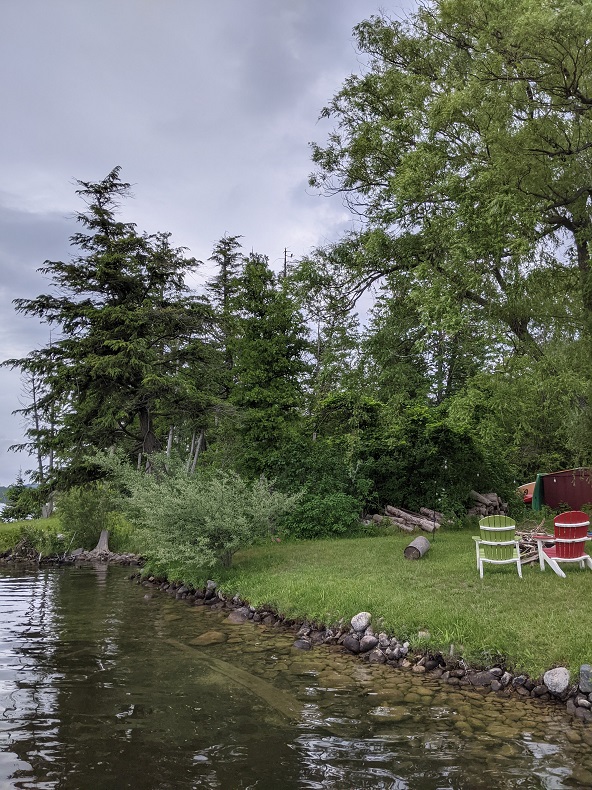
This week, at a lake house in Michigan, I kept hearing a sound that made me think of a gull, but wasn’t. At least, I heard it when I didn’t see any gulls. I’d heard that the Merlin bird identification app can now identify birds by sound. So I held my phone up and it told me right away: merlin.
That’s right, the first bird I ever identified with the Merlin app was a merlin. It turns out that the picture I took above actually captured the bird making the sound. See that dead tree poking up above the treeline, in the center of the picture? See that bird on it? That’s the merlin–a small falcon. Now that I know it’s out there, I hear it multiple times a day. I played it for my friends who own the house and they recognized the sound right away, but had no idea that there were merlins here, or even what a merlin is.
There’s quite a world out there, if you have the right tools to discover it. Once upon a time, the tools for learning to recognize the call of a wee raptor were a lot of patience, a knowledgeable friend, maybe some LPs of bird songs. Now that computer in my pocket is going to teach me a lot of new bird songs, very fast.
Photo: me
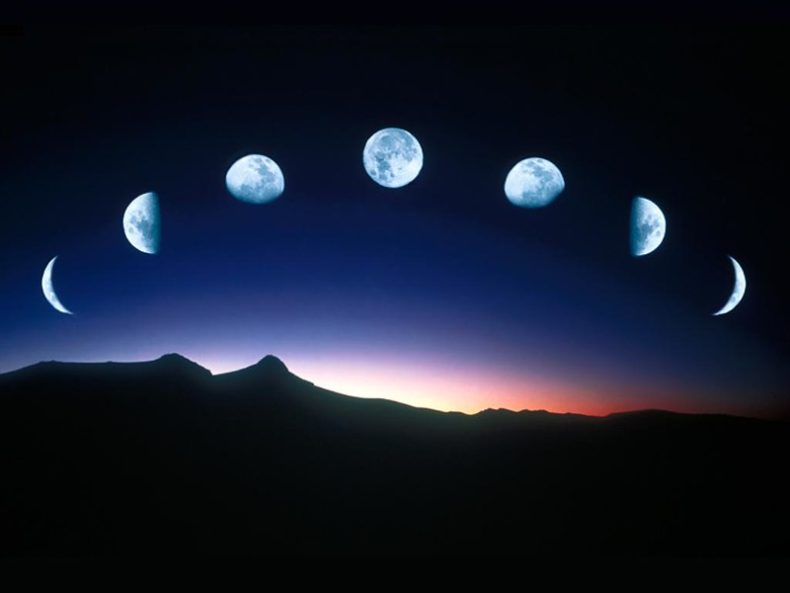
When I was sixteen, my voice teacher predicted I would become a Jack of all trades. It wasn’t a compliment: We were in the midst of a fight, squaring off across the shiny black battlefield of her baby grand piano. She wanted me to concentrate only on singing. But I couldn’t imagine abandoning subjects like math, from which I derived a kind of type-2 satisfaction, or quitting ski racing—the locus of my teenage social life.
That latitude—that lack of focus—would be my downfall, she warned. And her prophecy seemed to come true as I grew up and flitted from hobby to hobby, career to career.
In college, I fell in love with philosophy, then geology. After graduation, I moved to a mountain town where I spent winters in ski boots and summers sweating under a backpack or dangling from a climbing rope. In graduate school, I dedicated much of my free time to trail running and even completed an ultra-marathon. For a while, I became obsessed with trying to bake perfectly round baguettes with perfectly scored “ears.” I grew and canned food like the apocalypse was nigh. And for several years, I fronted a raucous country band.
On the outside, it looked like I had a long list of skills and accomplishments. But to me, this all felt like mounting evidence of my promiscuous mind and weak willpower. I was hardly exceptional at any of these pursuits, and I hopscotched between them like a distracted child. I wasn’t serious; I was just “going through a phase.”
Continue reading